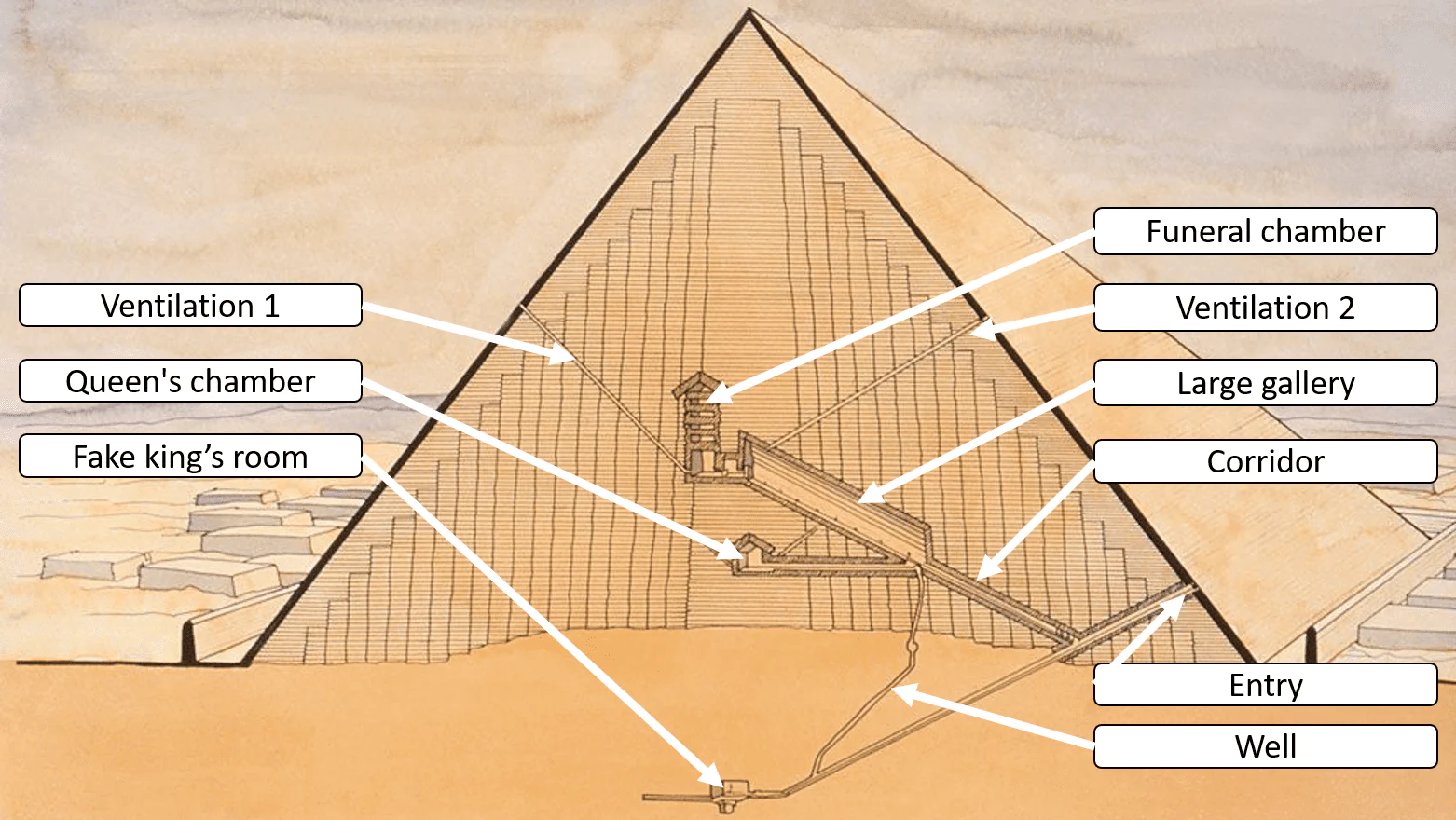Unraveling the Enigma: The Architectural Marvel of the Great Pyramid of Giza
- Home
- Blog

The Great Pyramid of Giza stands tall as an enduring testament to ancient Egyptian ingenuity, captivating the world with its colossal size, remarkable precision, and enigmatic allure. Situated on the Giza Plateau, just outside Cairo, Egypt, this architectural marvel is the oldest and largest of the three pyramids in the complex, serving as the eternal resting place of the pharaoh Khufu (Cheops).
A Triumph of Ancient Engineering:
Built over 4,500 years ago during the Fourth Dynasty of the Old Kingdom, the construction of the Great Pyramid remains a feat of unparalleled engineering. Comprised of an estimated 2.3 million limestone blocks, each weighing several tons, the pyramid’s original height was approximately 146.6 meters (481 feet), making it the tallest man-made structure for over 3,800 years.
Architectural Design and Precision:
The precision of the pyramid’s design is a marvel in itself. Its four sides align almost perfectly with the cardinal points of the compass. The base covers an area of over 5.3 hectares, and the angles of its sides exhibit an extraordinary degree of accuracy, with less than a 0.05% error margin from a perfect square.
The stones used in its construction were meticulously cut and fitted together with astonishing precision. Theories suggest that a ramp system and sophisticated techniques, possibly involving levers, sledges, and possibly waterways, were employed to transport and position these massive blocks.
Interior Structure and Chambers:

Upon entering the pyramid, one encounters a series of passageways, chambers, and corridors. The Grand Gallery, an ascending corridor, leads to the King’s Chamber and the Queen’s Chamber. The King’s Chamber houses the granite sarcophagus that was intended to hold the pharaoh’s remains.
The intricate layout and design of these internal structures have fascinated archaeologists and Egyptologists for centuries, sparking various theories and conjectures about their purpose and symbolic significance.
Historical and Cultural Significance:
Beyond its architectural grandeur, the Great Pyramid of Giza holds immense cultural and historical significance. It reflects the ancient Egyptians’ belief in the afterlife and their dedication to constructing monumental structures to ensure the pharaoh’s smooth transition to the realm of the gods.
Despite millennia of exposure to natural elements and human activities, the Great Pyramid endures as a symbol of Egypt’s rich heritage and the remarkable achievements of its ancient civilization. Its mystique continues to captivate scholars, explorers, and visitors alike, drawing millions of people from around the globe to witness its majesty.
Conclusion:
The Great Pyramid of Giza remains an architectural wonder that defies the passage of time. Its construction, precision, and historical significance continue to inspire awe and curiosity, inviting us to unravel the mysteries of ancient Egypt and marvel at the genius of our ancestors.
As we gaze upon this ancient monument, we are reminded of the enduring legacy of human innovation and the timeless allure of structures that stand as testaments to our quest for greatness.


vurcazkircazpatliycaz.ZcjqMAOpJwVi
I like this website very much, Its a very nice place to
read and obtain information.Raise your business